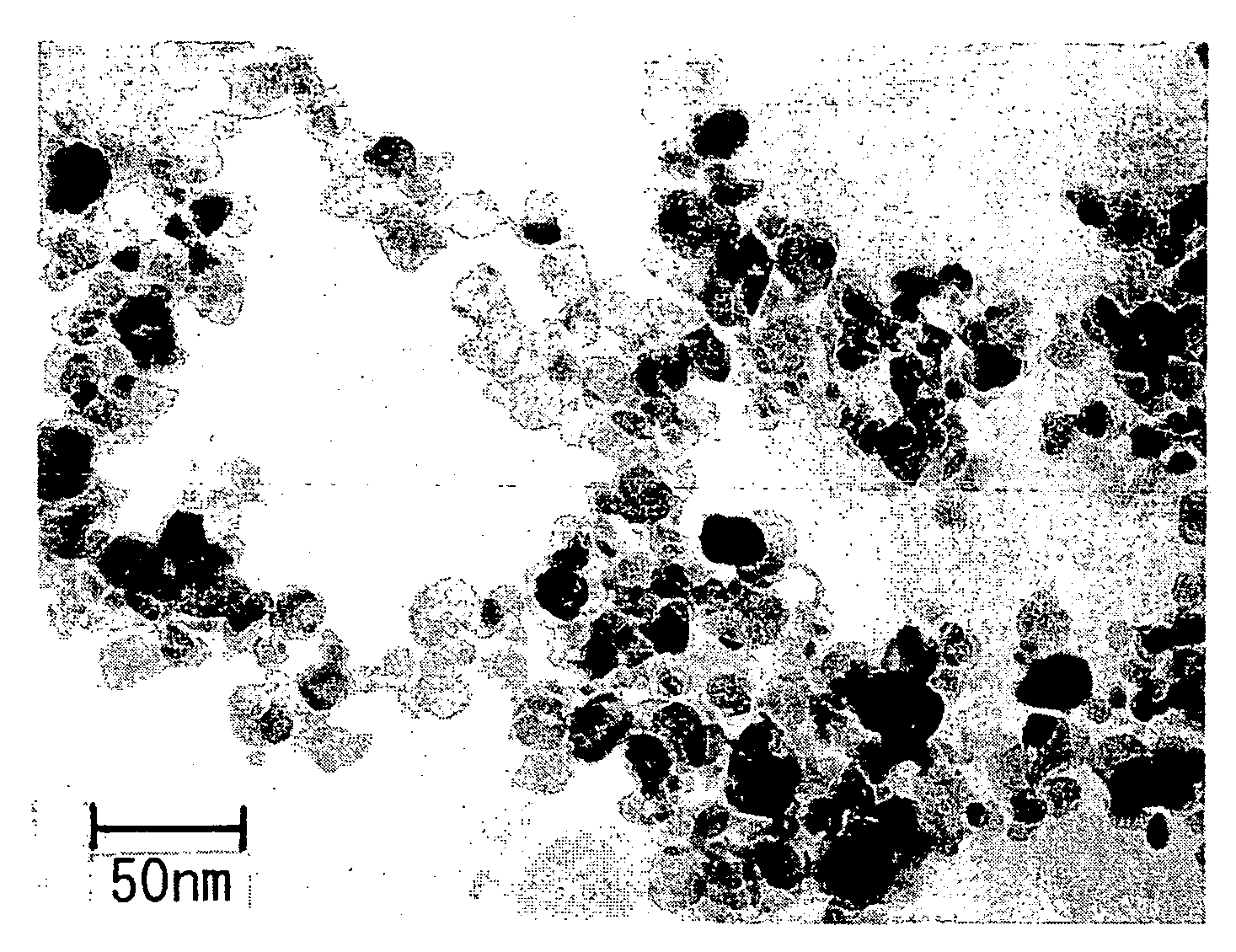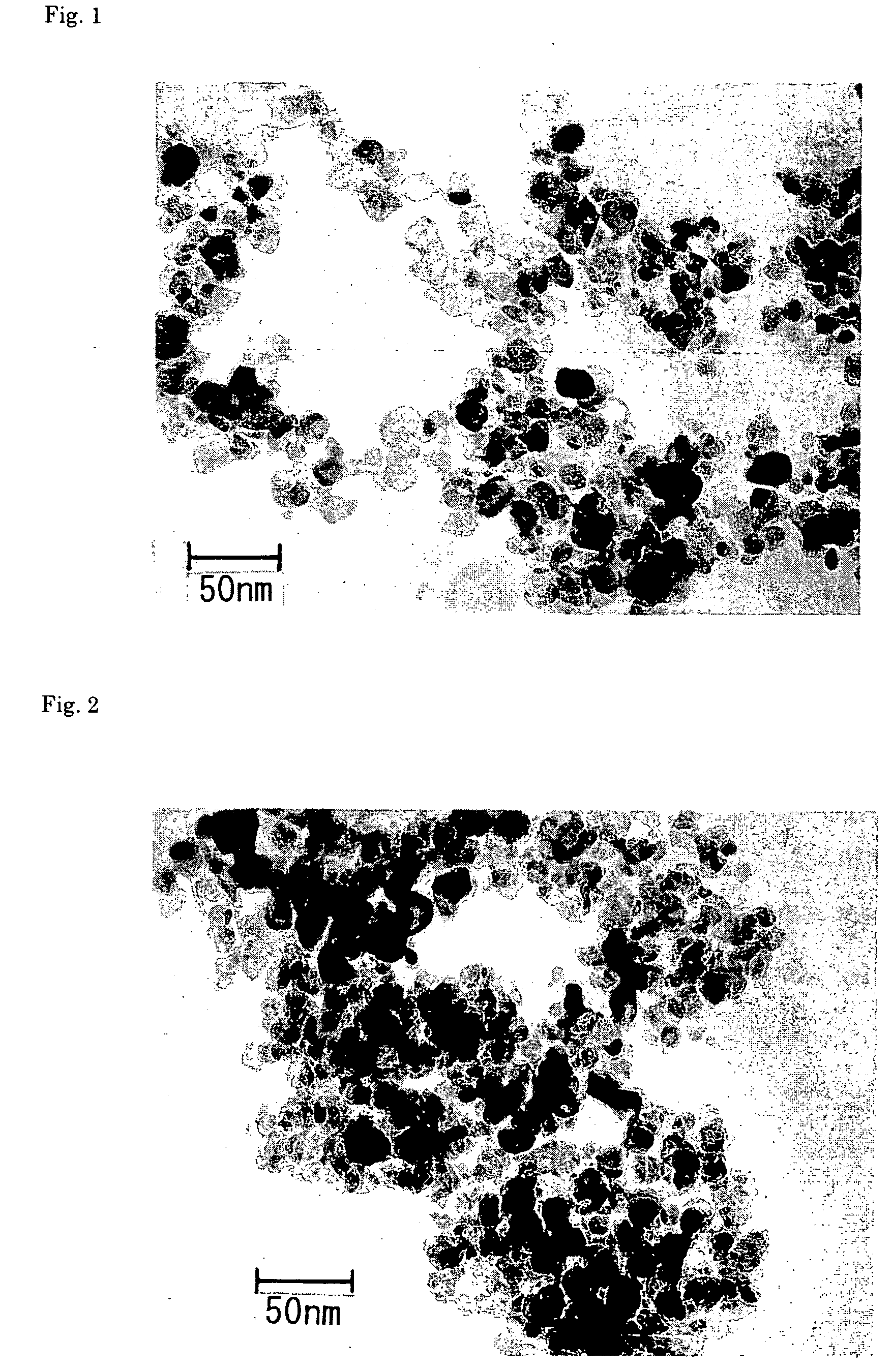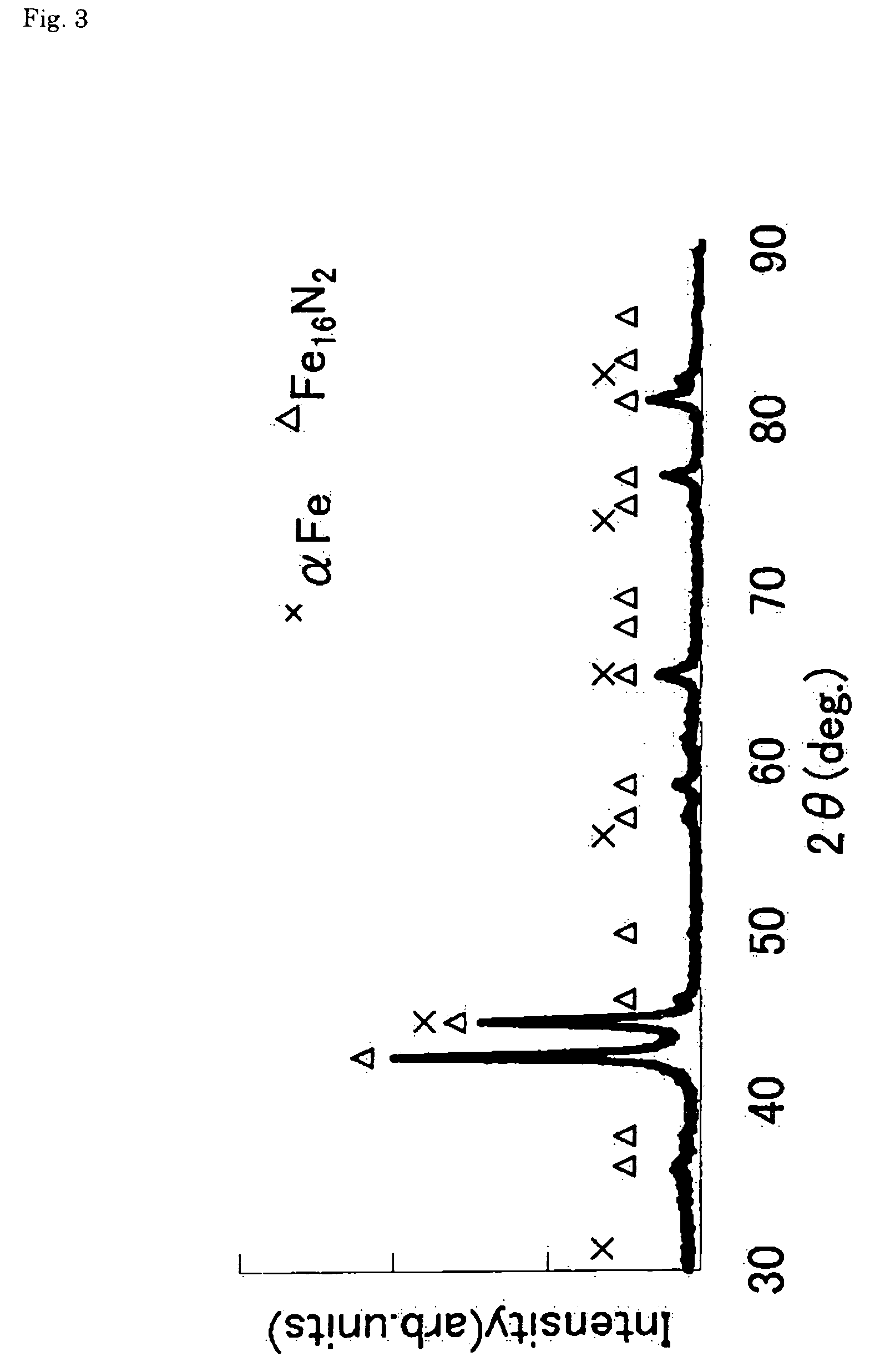Magnetic powder, method for producing the same and magnetic recording medium comprising the same
a technology of magnetic recording medium and magnetic powder, which is applied in the field of magnetic powder, can solve the problems of insufficient dissolution, inability to solve problems, and inability to maintain products, and achieve excellent high density magnetic recording medium, high coercive force, and high magnetic flux density.
- Summary
- Abstract
- Description
- Claims
- Application Information
AI Technical Summary
Benefits of technology
Problems solved by technology
Method used
Image
Examples
examples
[0167] The present invention will be illustrated by the following Examples, in which “parts” mean “parts by weight” unless otherwise indicated.
[0168] Preparation of Magnetic Powder
example 2
[0177] A samarium-containing iron-cobalt magnetic powder was produced in the same manner as in Example 1 except that cobalt ferrite particles were prepared by changing the hydrothermal treatment conditions to 180° C. and 4 hours to obtain cobalt ferrite particles having a particle size of 10 nm.
[0178] According to an X-ray fluorescent analysis, the obtained samarium-containing iron-cobalt magnetic powder contained 5.7 atomic % of samarium based on the total of the transition metals (iron and cobalt), and the atomic ratio of cobalt to iron was 30:70.
[0179] The obtained magnetic powder was observed with a transmission electron microscope. The powder consisted of substantially spherical or ellipsoidal particles having a particle size of 10 nm.
[0180] The magnetic powder had a saturation magnetization of 20.6 μWb / g and a coercive force of 136.1 kA / m when measured with applying a magnetic field of 16 kOe.
example 3
[0181] A samarium-containing iron-cobalt magnetic powder was produced in the same manner as in Example 1 except that cobalt ferrite particles were prepared by changing the hydrothermal treatment conditions to 260° C. and 4 hours to obtain cobalt ferrite particles having a particle size of 20 nm.
[0182] According to an X-ray fluorescent analysis, the obtained samarium-containing iron-cobalt magnetic powder contained 5.4 atomic % of samarium based on the total of the transition metals (iron and cobalt), and the atomic ratio of cobalt to iron was 29:71.
[0183] The obtained magnetic powder was observed with a transmission electron microscope. The powder consisted of substantially spherical or ellipsoidal particles having a particle size of 20 nm.
[0184] The magnetic powder had a saturation magnetization of 21.9 μWb / g and a coercive force of 123.3 kA / m when measured with applying a magnetic field of 16 kOe.
PUM
| Property | Measurement | Unit |
|---|---|---|
| thickness | aaaaa | aaaaa |
| particle size | aaaaa | aaaaa |
| saturation magnetization | aaaaa | aaaaa |
Abstract
Description
Claims
Application Information
 Login to View More
Login to View More - R&D
- Intellectual Property
- Life Sciences
- Materials
- Tech Scout
- Unparalleled Data Quality
- Higher Quality Content
- 60% Fewer Hallucinations
Browse by: Latest US Patents, China's latest patents, Technical Efficacy Thesaurus, Application Domain, Technology Topic, Popular Technical Reports.
© 2025 PatSnap. All rights reserved.Legal|Privacy policy|Modern Slavery Act Transparency Statement|Sitemap|About US| Contact US: help@patsnap.com



